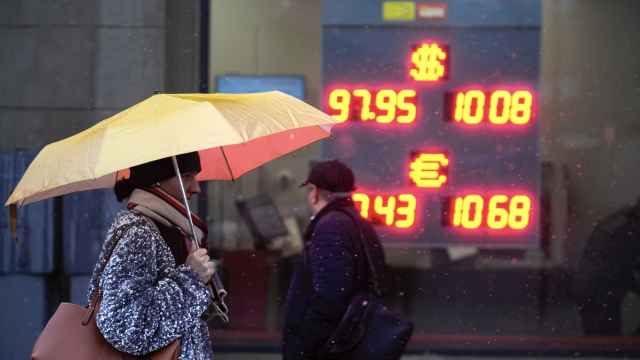HSBC just released a report that says emerging market punters will account for two-thirds of the world's shopping by 2050, dragging the global economic center of gravity into the east.
It is a topic that bne has been banging on about for several years now. Even Russia — which does badly in the HSBC survey — is already the second-largest consumer market in Europe and is well on its way to becoming No. 1 sometime in 2018-20.
Obviously the report, titled "The Consumer in 2050," focuses on the two giants of the emerging market world, India and China, but it also introduces some new names that are doing particularly well.
"The Philippines and Peru aren't always the first names to crop up when it comes to analyzing the brightest prospects in emerging markets. But they are two of the surprise performers in our study of the Consumer in 2050, which looks at how the huge rise of the EM middle class is going to affect global spending patterns in the next 40 years," said Karen Ward, senior global economist at HSBC and one of the authors of the report, in a Financial Times blog post.
The Philippines will benefit from massive income per capita growth and rapid population growth, with the latter rising to 155 million in 2050. It also has a very favorable demographic profile, with a median age of only 32 in 2050 compared with 22 today. By 2050, spending on restaurants, recreation and personal care in the Philippines will be at least 25 times today's levels. The story in Peru is similar, with discretionary spending possibly growing at more than 7 percent a year for the next 40 years.
"By contrast, much of Europe, including Eastern Europe, is plagued by poor demographics. The exception is Turkey where rising incomes, changing tastes and a young population will also see plenty of Turkish consumers hitting the high streets," Ward said.
However, the biggest difference will come from India and China due to their sheer size: collectively 2.6 billion people will join the middle class over the next 40 years in the two countries, a tectonic change that will take total emerging market consumption up to two-thirds of the world's total.
Russia the Laggard
At first glance, Russia is the least interesting of all the emerging markets in terms of new members of its burgeoning middle class and its population growth.
HSBC defines "middle class" as people with incomes of between $3,000 and $15,000 (in constant 2000 dollars), and other estimates put the size of the middle class at 13 percent of the population in China and less than 5 percent in India. What exactly makes you middle class remains a contentious issue, but incomes in all the emerging markets are near the bottom end of HSBC's range. India's per capita income was $3,652 adjusted for purchasing power parity, China's was $8,466, the Philippines' was $4,140 and Peru's was $10,318 in 2011, according to the World Bank's latest data.
On this score, Russia is playing in a totally different league and shouldn't even be counted as an emerging market any more. (Indeed, it is the only one of the BRICs to be classed as a "developed market" according to UNDP's last development report). Russia's per capita income was $21, 248 in 2011 — only slightly behind that of Portugal — and up to 60 percent of the population are already middle class, according to Citibank.
Ward describes how as more emerging markets move into this "middle income" bracket, "food and other basics stop consuming most of the monthly salary, and there is more money for the fun things in life. Once salaries reach about $15,000 a year, discretionary spending amounts to as much as 60 percent of total consumption." Russia has already long since passed this point, which lies in the future for almost all the other emerging markets.
Chris Weafer, chief strategist at Sberbank CIB, formerly Troika Dialog, says that retail spending has been rising at 20 percent a year since 2000 and has grown from $80 billion annually to top $660 billion over the period with no sign of slowing down; just over half of all Russian discretionary spending already goes on non-food items.
"Russia is already the second-largest consumer market in Europe and very likely to be the largest by the end of 2013, as well as the fourth-largest [consumer] market in the world," Weafer says.
The picture is less favorable when it comes to demographics, which is the other big driver of consumption. Peak consumption comes between the ages of 16 and 40, Ward says, when people are buying houses and starting families. The populations of India and China are both growing and will reach 1.6 billion and 1.4 billion, respectively, in 2050, according to HSBC. However, Russia's population is expected to fall from the current 143 million people to 109 million by 2050, according to a U.S. Census Bureau report.
The trouble is that most estimates of Russia's population growth are based on a comprehensive study made by the UN in the 1990s, which predicted a cataclysmic fall in the population size and made the whole issue of Russian demographics an issue in the first place.
Scared by the prospect of having no one to rule, the Kremlin launched a major "mother and child" reform during Putin's last stint as president, which saw the birthrate turn positive for the first time in modern history in 2009. And last year, Russia recorded the first increase in its population since 1991: the population grew from 142 million to 143 million, albeit partly fueled by strong immigration.
Improving public health is close to the top of the government's agenda, and notably in the middle of December Prime Minister Dmitry Medvedev launched an attack on smoking; Russians are the heaviest smokers in Europe, which kills slightly less than 200,000 people a year.
On top of the state's actions, as Russians become richer they are also becoming increasingly concerned about their health, like middle classes everywhere. Correspondingly, the consumption of vodka has plummeted, while that of wine has soared over the last decade.
The bottom line is that the projections for a dramatic fall in Russia's population are looking increasingly unlikely, and as the chart above shows, Russia seems to be on track to fulfill the increasingly optimistic projections that will see its population increase over the coming years.
This will have a big impact on consumption in Russia, as although the domestic growth rate is far less than that in places like China and India, as the average Russian is much richer than the average Indian, they have already moved well beyond increasing their purchases of cheese and are buying things like cars, apartments and pension funds.
Even Jim O'Neill, investment guru and chairman of Goldman Sachs Asset Management, thinks that Russia's demographics will surprise on the upside. His original predictions on when BRICs economies would overtake the West were based on the UN report on Russian democratic decline, which is increasingly in question now.
"One of the best things that has happened in the Putin decade is that the demographics are improving," O'Neill told bne earlier this year. "Male life expectancy has gone from 59 years to about 65 due to policies to reduce the life-threatening consumption of alcohol. If this continues, then there is a real possibility of an upside shock to our projections."
A Message from The Moscow Times:
Dear readers,
We are facing unprecedented challenges. Russia's Prosecutor General's Office has designated The Moscow Times as an "undesirable" organization, criminalizing our work and putting our staff at risk of prosecution. This follows our earlier unjust labeling as a "foreign agent."
These actions are direct attempts to silence independent journalism in Russia. The authorities claim our work "discredits the decisions of the Russian leadership." We see things differently: we strive to provide accurate, unbiased reporting on Russia.
We, the journalists of The Moscow Times, refuse to be silenced. But to continue our work, we need your help.
Your support, no matter how small, makes a world of difference. If you can, please support us monthly starting from just $2. It's quick to set up, and every contribution makes a significant impact.
By supporting The Moscow Times, you're defending open, independent journalism in the face of repression. Thank you for standing with us.
Remind me later.





